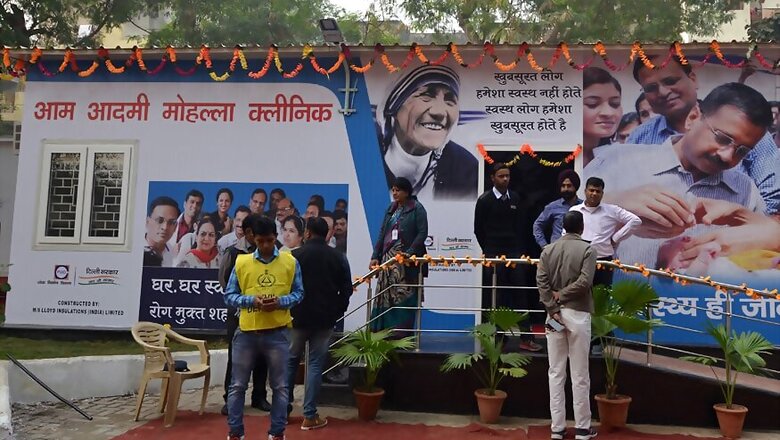
views
New Delhi: Aam Aadmi Party and the office of lieutenant governor in Delhi have had a troublesome relationship from the word go. While one would expect basic public services like health and education to be treated above politics, but that has rarely happened. As a time when Delhi CM Arvind Kejriwal and L-G Anil Baijal are seen to be at loggerheads over the Mohalla Clinic model, News18 does a reality check.
More than 100 mohalla clinics operate in Delhi and were originally modelled on the idea of taking healthcare inside bastis, slums or urban villages, instead of people having to trudge to government facilities.
Dr Satbir Kaur, a young doctor three years out of her MBBS and previously with an MCD hospital, looks after a mohalla clinic in south Delhi’s Panchsheel Vihar, bordering the urban villages of Hauz Rani, Khirki gaon and swathes of Malviya Nagar.
In a day, she is the general physician for over a 100 patients, some from as far as the Delhi-Faridabad Badarpur border. When News18 met her, it was past 1pm, closing time for mohalla clinics, yet the crowd was going strong — with coughs, colds, joint pains, boils, stomach problems, etc.
“I just wish I had more space,” Kaur said, as yet another patient turned up for tests referred by the nearby Pt. Madan Mohan Malviya hospital, a Delhi government hospital, as she functioned with lightning speed with a tablet, creating digital records, or looking up case histories of regular patients.
Though wary of “political” press attention on the clinic’s work, she called it a good model to work in.
Rameshwari, a diabetes patient, waited with a boil on her foot. “She’s a good doctor, this clinic stays open till 2:30 or 3,” she said.
“The Malviya Nagar hospital had sent me here when I was ill last year for tests, so I trust this clinic for my children now,” said Geeta.
Unlike the commonly seen anger and frustration with government hospitals, the patients here had developed trust in the mohalla clinic. This was noted by the premier medical journal The Lancet in December 2016, as it read, “The initiative is aimed at expanding the reach and range of health services in unserved and underserved areas such as slums.”
In January 2017, former United Nations Secretary-General Kofi Annan, commended Delhi CM Arvind Kejriwal as the clinics were “consistent with the Universal Health Coverage goal” of the World Health Organisation (WHO).
“Those with money go to private clinics,” said Maheshwari, “but a government hospital saved my life.”
The mohalla clinics, said Dr Amit Sengupta of Jan Swasthya Abhiyan, were fulfilling the role of the general physician of yore, who would be known to and available to everyone in a residential area before the system was supplanted by specialists in hospitals.
Dr Rajmohan Panda, a public health specialist at the Public Health Foundation of India (PHFI), said this is close to what primary healthcare centres in rural India need — a generalist who could treat fever, diarrhea, snakebites etc.
Comparing the system to the UK’s National Health Service (NHS), he said it was staffed more with trained nurses, while Sengupta drew similar comparisons with Thailand’s health workers.
As examples of advanced urban primary healthcare, Dr K Srinath Reddy, president of PHFI, drew comparisons with models in Singapore and Hong Kong.
However, as The Lancet noted, the project of expanding the clinics to 1,000 in a year has been “caught up in a political dispute”. Infighting among Delhi’s various authorities has stalled the opening of more clinics.
Though most public health specialists ruled in favour of the mohalla clinic, even it came up short as a model to be replicate.
“We don’t know what the outcomes of the mohalla clinics are as they have not been evaluated regularly,” said Panda. “Human resource is finite, and mohalla clinics are drawing people away from dispensaries and MCD clinics.”
India needs a cadre of trained public health professionals, not just doctors, for an ideal model, said Panda, adding that rural postings need to be incentivised for doctors.
Panda said that instead of putting money in dialysis centres, spending on equipping PHCs for preventive treatment would reduce the number of patients with failing kidneys. All it takes is political will, he said.

















Comments
0 comment